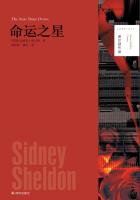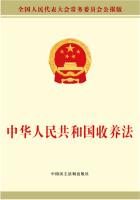The measurement of the base had taken thirty-eight days’work!Itwas begun on 6th March,and did not end until 13th April.Without losing time,the leaders of the expedition decided to begin the series of triangles at once.
From the 14th April,the most exact observations were taken to ascertain the latitude of the southern end of the arc of the meridian which was to be measured.During the preceding nights,when operations on the base were suspended,William Emery and Michel Zorn had already ascertained the heights of several stars,and so correct had been their observations that the greatest variation did not exceed two ***agesimal seconds,which variation was probably due to changes in the condition of the atmosphere.
From these observations,so minutely repeated,the latitude of the southern point of the arc could be ascertained with more than the essential accuracy.This latitude was,in decimal degrees,27.951789.
The latitude having been obtained,the longitude was calculated,and the point indicated on an excellent large-scale map of South Africa.
On this map were shown all the recent geographical discoveries in this region—the routes of such travellers as Livingstone.It was now necessary to choose on this map the meridian whose arc they were to measure.Obviously,the longer the arc the more,the influence of possible errors in the fixing of the latitudes will be reduced;that from Dunkirk to Formentara included nearly ten degrees of the meridian of Paris—9°56’.
In this Anglo-Russian triangulation the meridian had to be chosen very carefully.Natural obstacles,such as impassable mountains or great expanses of water,which might have stopped the observers’progress,were to be avoided.Fortunately,this part of South Africa seemed to favour such operations.The inequalities in the soil were inconsiderable,the streams few and easily crossed;they might possibly encounter dangers but not difficulties.
This part of South Africa is,in fact,occupied by the Kalahari desert,a vast stretch extending from the Orange River to Lake Ngami,between the twentieth and twenty-ninth parallel;its breadth includes the interval between the Atlantic on the west and the twenty-fifth meridian east of Greenwich.Doctor Livingstone had followed the eastern edge of this desert in 1849,reaching this meridian at Lake Ngami and the Zambezi Falls.
The desert itself hardly merits the appellation.It in no way resembles the Sahara,as one might imagine—sandy,devoid of vegetation,and almost impassable for lack of water.The Kalahari produces numerous plants;its soil is covered with an abundance of grasses;it possesses thick underwood and forests of lofty trees;animal life abounds,both game and beasts of prey;it is inhabited or traversed by settled or wandering tribes of bushmen.But water is scarce for much of the year;then the numerous streamlets which intersect it are dried up,and the aridity of the soil is the real obstacle to exploration.But now the rainy season was only just over,and they could rely on finding a considerable amount of standing water in the pools,ponds and rivulets.
Such was the information given by the hunter Mokoum.He knew the Kalahari well,from often having visited it,either as a hunter on his own account or as a guide to some geographical expedition.Colonel Everest and Matthew Strux agreed that this vast open space was very favourable to a successful triangulation.
It remained to select the meridian on which an arc of several degrees was to be measured.Should this meridian be taken from one end of the base,so as to avoid connecting this base with another point of the Kalahari by a series of auxiliary triangles?
After careful examination it was decided that the extreme south of the base should be the starting point.This meridian was the twenty-fourth east of Greenwich,and it extended over at least seven degrees,from the twentieth to the twenty-seventh,without meeting any natural obstacles;at least none was indicated on the map.Northward it crossed Lake Ngami at its eastern end,but this was no insurmountable hindrance,and Arago had encountered much greater difficulties when he trigonometrically connected the coast of Spain with the Balearic Islands.
So it was agreed that the arc to be measured should be taken along the twenty-fourth meridian,which,if extended to Europe,would facilitate measuring a northern arc on the territory of Russia.
Work began at once,and the astronomers chose a point which should become the apex of the first ********,whose base should be that measured on the ground.
The point selected was to the right of the meridian,an isolated tree on a slight mound about ten miles away.It was plainly visible from both ends of the base,on which Colonel Everest erected two pylons,and its pointed tip allowed it to be sighted with extreme accuracy.
The astronomers then measured the angle which that tree made with the south-east end of the base.This angle was measured with an instrument fitted with two telescopes;one was directed towards the north-west end of the base,the other towards the tree;this gave the angular distance between the two stations.
Needless to say that the perfection of the instrument enabled its user to avoid errors of observation,and these were still further reduced by repeating the task.
Similar instruments,but made so that the telescopes could be directed upwards instead of horizontally,also enabled the observers to take the height of the stars,from which could be calculated the latitude of each trigonometrical station.
In the meantime camp was struck,the oxen yoked to the waggons,and under the bushman’s guidance the caravan moved on to the first station,where they were to halt.Two donkeys and their drivers,who were told off to carry the instruments required,accompanied the observers.
The weather was clear,and favoured the operation.It had been arranged that,should they be impeded by the state of the atmosphere,the observations should be made by night by means of reflectors and electric lights.
On the first day,the two angles having been measured,the results,after having been carefully compared,were set down in a duplicate register.In the evening all the astronomers were assembled with the caravan round the tree which had served them as sighting point.
It was an enormous baobab,whose circumference was about eighty feet.Its bark,the colour of syenite,gave it a peculiar appearance.Under the wide-spreading branches of this giant tree,which were inhabited by tribes of squirrels,which lived on its egg-shaped fruit,the whole caravan found shelter,and supper was got ready for the Europeans by the cook from the launch.There was no lack of venison:the hunters had killed several antelopes,and soon the smell of broiled steaks filled the atmosphere and whetted the appetite of the observers,who had no need of such stimulants.
After the comforting meal,the astronomers retired to their own waggons,while Mokoum posted sentries round the encampment;large fires,made from the dead branches of the baobab,were kept up all night,and kept any predatory animals who might be attracted by the scent of flesh at a respectful distance.
But,after two hours’sleep,Michel Zorn and William Emery got up.Their work as observers was not yet over.They wanted to calculate the latitude of this station by sidereal observations.Regardless of the day’s fatigues,they set to work again,and while the laugh of the hyaena and the roar of the lion echoed across the darkness of the plain,they scrupulously determined the displacement which the zenith had undergone as they travelled from the first station to the second.















